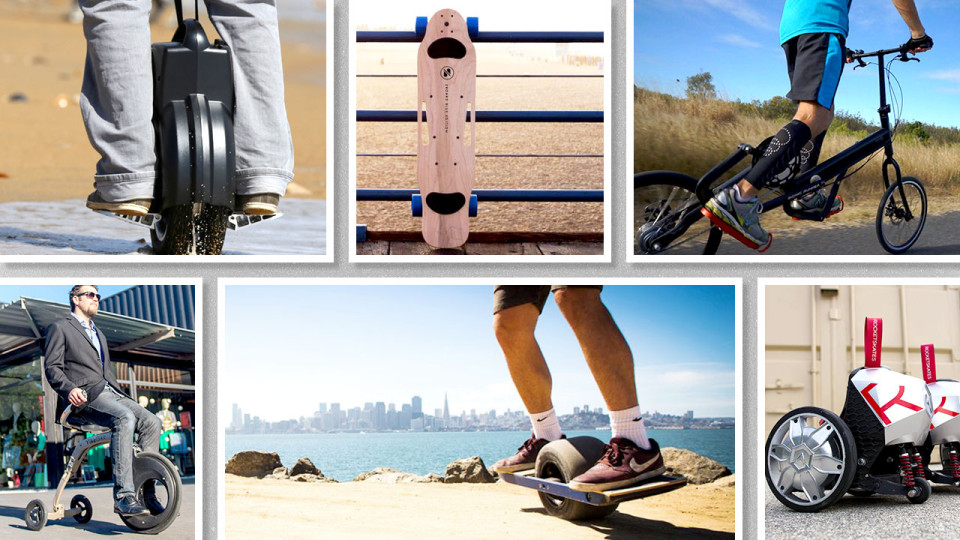Who hasn’t seen sci-fi movies that feature a person strapping on a contraption to zip into the stratosphere? Thanks to contemporary minds, space age machines are no fiction; some are even being developed for the fitness market. We’ve unearthed some of the latest and, in some cases, weirdest fitness innovations. Some claim they offer equal—if not better—benefits to what those runners receive when they hit the trail. Seriously? Scooters, skates and cycles that promise stamina and health benefits better than running? We don’t think so. But that doesn’t make them any less fascinating! Will any of these wind up in your home? Keep reading to decide.
1. The Street Strider
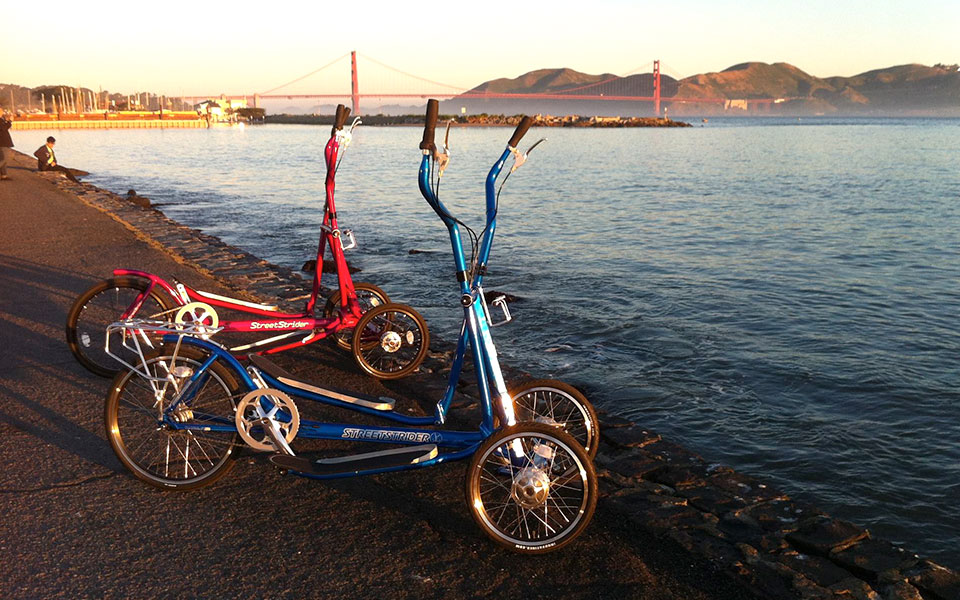
According to the manufacturer, Street Striders offer full body workouts that burn 50-percent more calories than a bicycle and 13-percent more calories than stationary ellipticals, so shoulders, back muscles, triceps and biceps are toned. The lower body also benefits: this machine exercises quads, hamstrings and derriere plus the core. The Street Strider claims to “run on air,” so a natural jogging stride is all it takes to rack up miles. What’s missing? The impact on your joints, so this machine makes a great stress reduction and injury rehab product and it claims to reduce osteoporosis risks, too. Do you suffer knee and hip issues that keep you from your running game? The Street Strider could be your salvation.
Can it replace a regular running schedule? It may actually help you run better if you have impact-specific physical issues that prevent you from running as often as you like.
2. ElliptiGO
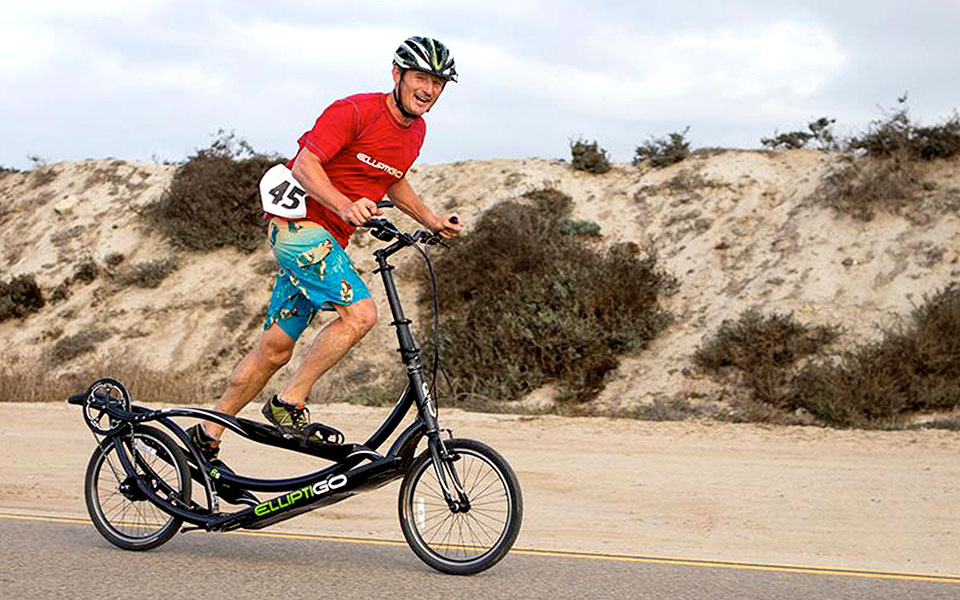
An ultra-marathoner invented the ElliptiGO after he was forced to seek low-impact exercise options following hip and knee injuries. His first prototype was composed of sawed metal, steel tubing, skateboard wheels and wood pedals. Not only did the prototype prove to be stable, but it was a blast to ride! One glance at the ElliptiGO and you’ll see why. It conditions the body like any bicycle, but benefits are superior because impact is removed from the equation. Elliptical biking isn’t for everyone, but it can become an innovative addition to a conditioning program if combined with regular runs.
By the way, the ElliptiGO undertook a 207.6km course in the Sierras at altitudes up to 2.74km without breaking a sweat. Not yet available in Singapore, you can buy one from New Zealand by visiting the official site.
3. ZBoard
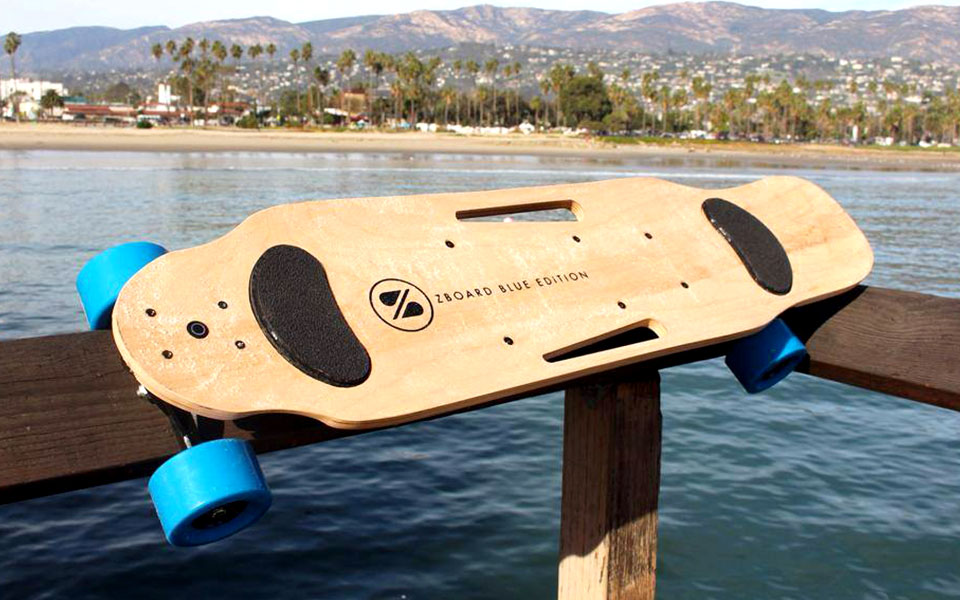
This skateboard on steroids is guaranteed to give your body a workout and stop other skateboarders in their tracks. But will it replace running—especially for devoted runners? Not really, but it can become an alternative conditioning mechanism. The ZBoard is technically a weight-sensing electric skateboard. Pressure applied by the rider is conveyed to a micro-controller that sets the motor’s speed. You go by leaning forward. Lean back and the braking system kicks in. The ZBoard comes with a charger (either 110v or 220V) and a handle.
Will this take the place of running? Not exactly—but if you seek an efficient, trendy transportation alternative (for environmentalists, it replaces about 638km per litre!), this might appeal to you. That stated, be forewarned: wet pavement and puddles can permanently damage this board and once the two, six-month limited warranties (battery and board) run out, you’re on your own. There’s a reason the website features a “How do I cancel my order?” link. Keep this in mind.
4. Acton RocketSkates

If your idea of a great workout is strapping clunky booties equipped with four motors to your feet, you may want to supplement your running regimen with these strange-looking skates. A second iteration of Acton’s original power-driven skates, there’s no rocket ride to be had here, though they’re worth a look-see if you’re curious. You won’t get an equal calorie burn or cardio workout because the motor does the physical work, which begs this question: Do you really want to be seen wearing these if you like to look cool when you exercise? Visit Acton’s website to glimpse RocketSkates and learn how they can help you travel at up to 19.3km per hour. The best description we’ve read for RocketSkates refers to them as “mini-Segways for the feet,” but frankly, physical benefits gleaned from wearing them is negligible.
Buy them for the novelty factor. Or a quirky ride. But if you’re keen to replace your running program with these skates, your body won’t thank you. Visit the website for ordering updates; at the moment, they’re not yet available for purchase.
5. Kangoo Jumps
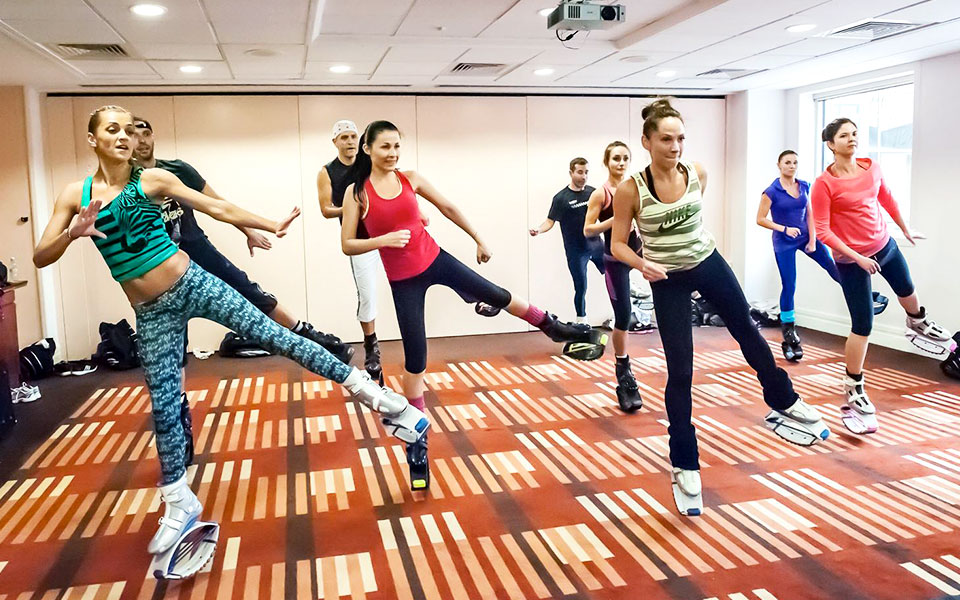
Now this is more like it! Enhance your run with rebound shoes and wait until you see how much less impact you feel. Designed for joggers, athletes and runners who are sick and tired of cutting back on runs due to aching joints, this could be your salvation. Kangoo rebound running shoes deliver posture, stress and cardiovascular benefits, improve bone mass, shorten recovery time, prevent injuries and hype endurance. Increased weight loss could result from more training runs once impact-related consequences are removed from the equation. Your spine benefits from soft landings and exercise-related pain is minimized (if not eliminated), so even exhausting runs could be a piece of cake.
Sure, Nike and Adidas claim that their rebound shoes reduce impact, but compared to Kangoo Jumps, these brands have a long way to go. The Swiss Federation Institute of Technology compared multiple rebound shoes and found that “reduction of the force impact is significant” only with Kangoos. Visit the website for a look-see.
6. OneWheel
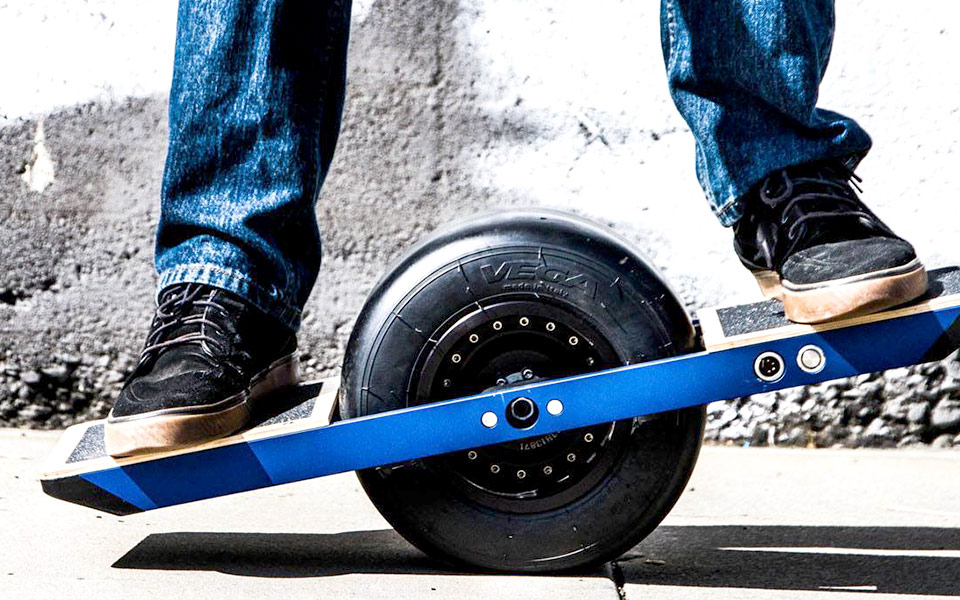
Can this product really compete with a great running program? Not really. It may be the latest self-balancing electric skateboard to hit the market, but the sheer number of muscles you won’t use makes it a questionable physical fitness program choice. Think of OneWheel as you would the aforementioned RocketSkates and ZBoard: fun, but your body won’t get an adequate combination of upper and lower body work on this power board. On the other hand, expect a 19.3km/h ride by leaning forward to go and leaning back to slow down. Regenerative braking charges the battery and heel or toe pressure guides turns. So what’s the benefit? A smoother ride as long as you’re agile, nimble and willing to put in the time it takes to acquire the balance this board demands.
The aerobic, skeletal and muscle workout you crave is minimal compared to running benefits, but custom colors and an impressive lithium battery are both draws. Replace a healthy run? Not likely.
7. YikeBike
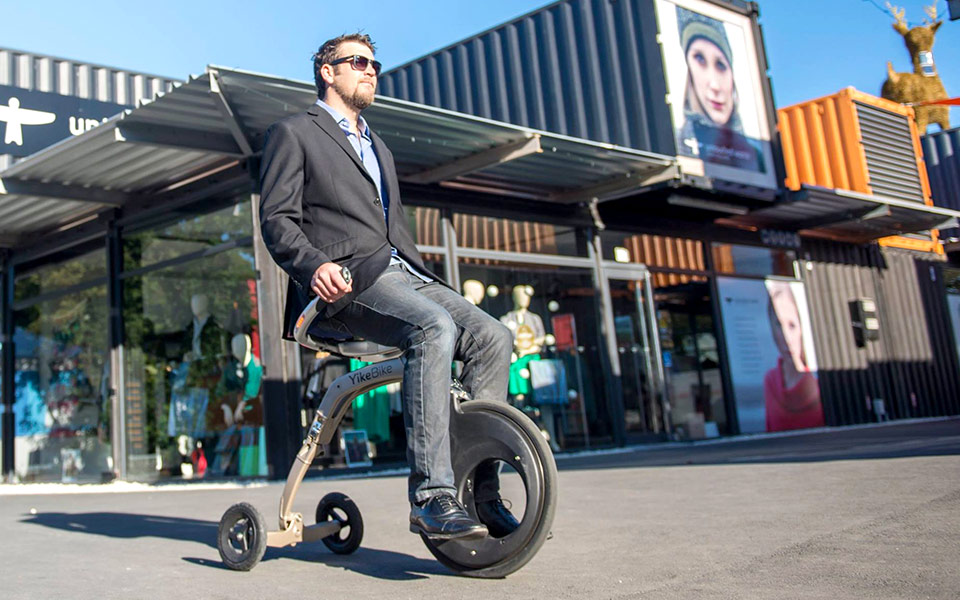
YikeBikes are manufactured in the neighbourhood: Christchurch, New Zealand. This means getting your hands on a YikeBike could be easier than ordering from abroad and you can place an order over the web. Thousands of hours of testing went into the conception of this machine. However, what inventors produced is a high quality electric bike, rather than a substitute for the conditioning a body receives as a direct result of a classic running routine and race participation. There are plenty of things to like about this modified bike as long as you’re not seeking to condition your body: it’s safe, manoeuvrable, delivers high performance and freedom. Front wheels take pot holes and uneven surfaces like a pro, and curbs are a breeze, so if you’re in the market for a bike because you need serious help getting from place to place, the YikeBike could be the answer to your prayers.
On the other hand, if you’re just curious about this innovation as a substitute for running, forget about it. The two are mutually exclusive, so invest in new running shoes instead.
8. TravelScoot
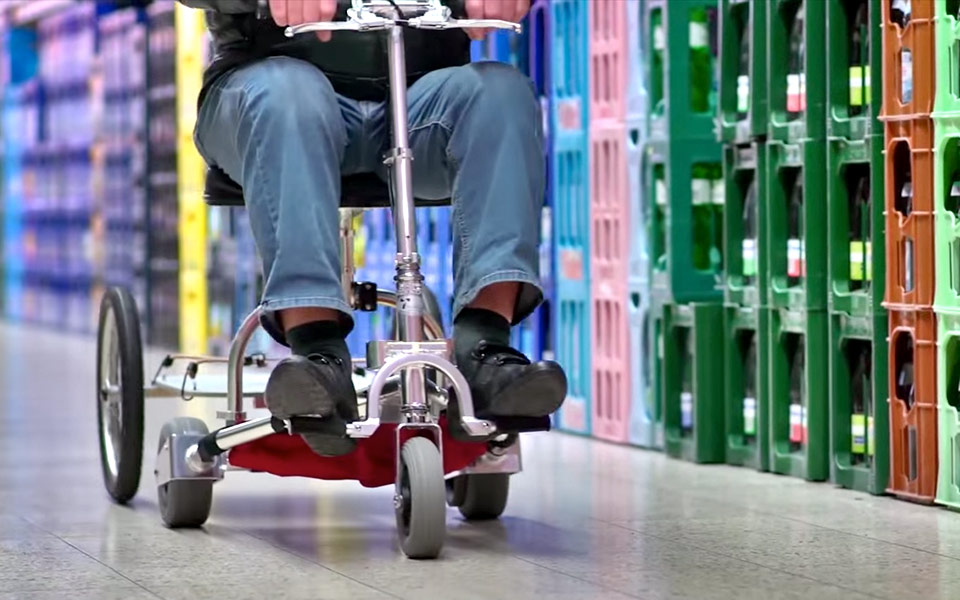
It’s anybody’s guess why the TravelScoot made this list of new inventions to augment or substitute for running programs. These quirky aluminium scooters, powered by lithium-ion batteries, are likely a boon to people who have problems getting around, and to satisfy this burgeoning audience, the manufacturer has designed multiple models, including a Junior version that appeals to small people (1.37m to 1.6m). In some ways, this vehicle is counter-intuitive when it comes to the objectives you set for yourself when designing a running program. Ride the TravelScoot and you actually use fewer muscles because you “scoot” from place to place without so much as putting a foot down on terrain or getting your heart rate up to good numbers.
Preview this line at to see for yourself why the TravelScoot makes for great transportation but a poor running substitute, especially if marathons and endurance races are your goals.
9. Razor Scooters
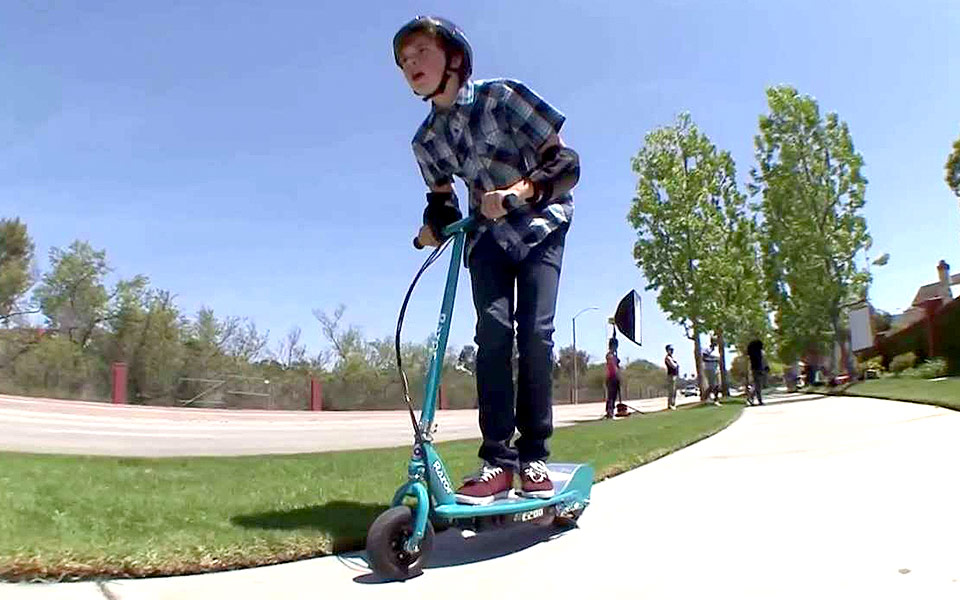
You would have to be living on the moon not to have heard of the Razor scooter brand—it’s been around for decades. The original Razor scooter debuted to an eager audience and five million were sold within six months of availability. Since then, the Razor has produced new and improved models and won numerous awards, but take the place of a traditional program of running? Hardly. First and foremost, the Razor is classified as a fun toy that can tone muscles, burn calories and give your cardio system a boost, but the degree to which benefits are delivered is negligible compared to some of the other products in this list.
Razor designers continue to churn out trendy, youthful and sometimes outrageous designs, as evidenced by the list of models currently on the company website, so if you just want to have fun and get in touch with your inner child, a Razor scooter offers some exercise, lots of laughs and it won’t kill your budget!
10. XPogo
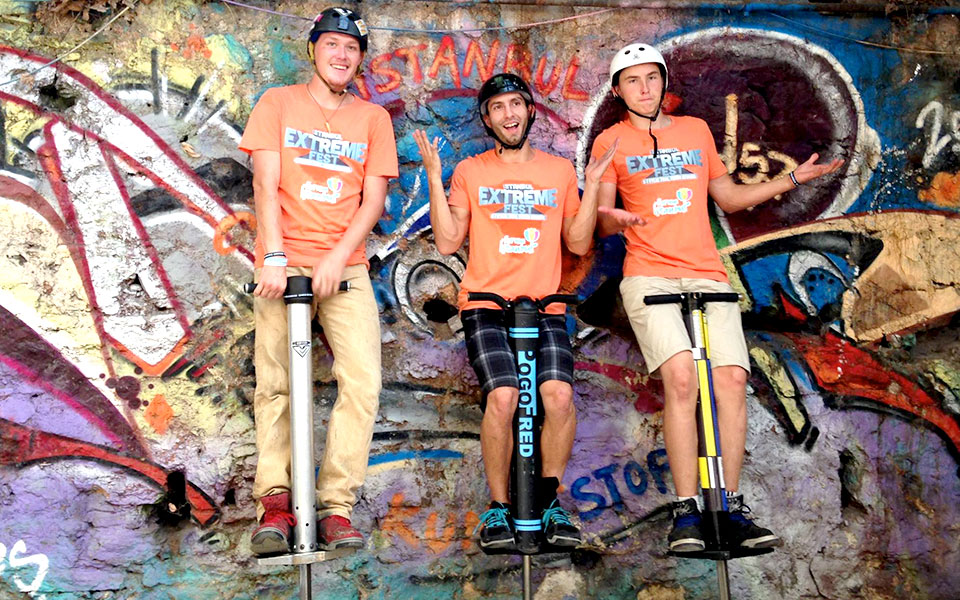
Remember what it was like to hop around on a pogo stick as a kid? Remember when your mum warned about getting hurt if not killed on one of these? Don’t tell her if you add XPogo to your arsenal of exercise aids, because this is no kid’s toy! The XPogo was designed by a group of offbeat US entrepreneurs, but it’s making waves around the globe—particularly in China where leaping higher than 3 metres into the air at competitions sets a high bar for extreme pogo stick competitions. Consider the 2015 Pogopalooza, an extreme event slated for 15 cities, according to event planners.
By all means, buy an extreme pogo stick if death-defying activities are more important to you than a well-conditioned body because the XPogo requires skills, muscles and guts that have zero relationship to running programs.
11. Bionic Runner
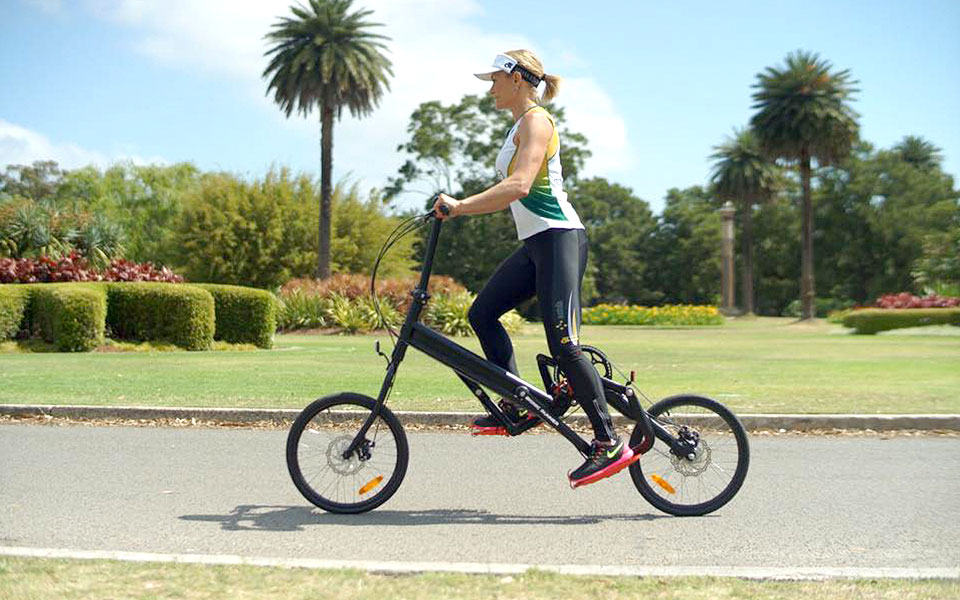
One of the most fascinating new fitness products to hit the market is the Bionic Runner. Claims are appealing: Order online for US$1,495 (international delivery included), and use it to gain a “biomechanical advantage” over those who run without benefit of technology. According to the product’s website, you can expect less impact on joints, fatigue is virtually eliminated and the risks of joint, tendon and muscle-related strain injuries drop. Get your heart rate up to healthy numbers equal to those you achieve when running and maintain that optimal rate longer. Endurance runners benefit most from this product.
Frankly, the Bionic Runner looks awesome, but it’s pricey, so if you’re considering one, do your homework to make sure this is a wise investment for you. If this equipment does half of what product claims state, this could be the next generation of training equipment that makes winners of those who enter marathons, ultras and endurance races.
12. HUVr
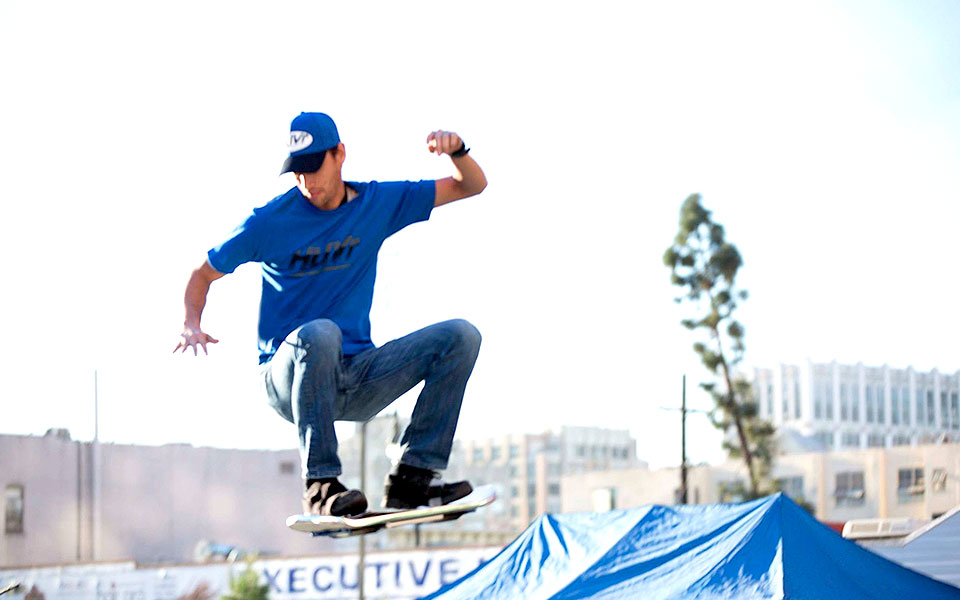
Did we save the best for last? You decide. The HUVr looks too space-age and edgy to be real, but you deserve a look-see at what could be science fiction or the magic carpet ride you dreamed about as a child. Here’s what inventors claim: This space age board uses an app to control the board, so you activate it via Bluetooth up front and program in the speed and route before you “lift off” and zoom to your destination a few feet off the ground. We’re thinking this is for real, because international entrepreneur and venture capitalist Mark Cuban has endorsed it, and the guy wouldn’t align himself with a hoax. Further, Massachusetts Institute of Technology graduates are behind the innovation they call “the key to anti-gravity” and a boon to efficiency, speed and transportation.
The HUVr website has not yet begun to take orders, nor have retailers, so until we see that link appear, we remain sceptical. Hopeful, but sceptical.
13. IO Hawk
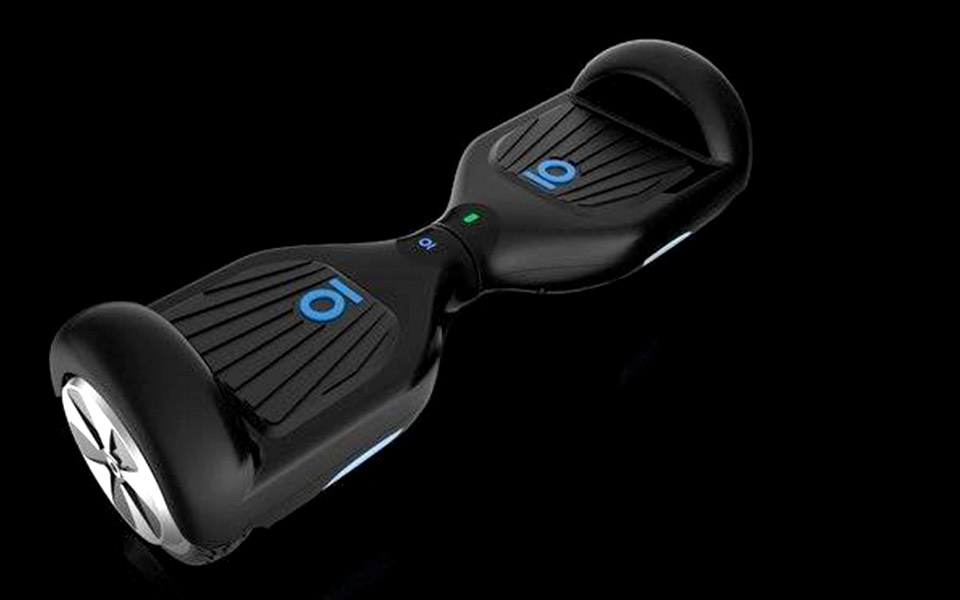
Got a few thousand bucks lying around? An IO Hawk may have your name written all over it. The Hawk transporter is so new that the first models just shipped on 6 February 2015. Check them out on the corporate website. If you’re physically spent and want to give your muscles a break after an arduous run, this two-wheel personal motorized transporter only requires a rider to bend his knees, and off you go! There’s plenty of power in the Hawk’s battery: Travel up to 19.3 kilometres without expending a single calorie or running out of a charge. Owners can weigh up to 127 kilograms, so don’t let weight keep you from putting one on your wish list. The Hawk re-charges in three hours and enjoys a compact footprint equal to a person’s shoulder span, but if it pours rain in your neighbourhood, those puddles could make short work of your expensive new gadget, so err on the side of caution before you buy one of these trendy transporters.
14. Airwheel
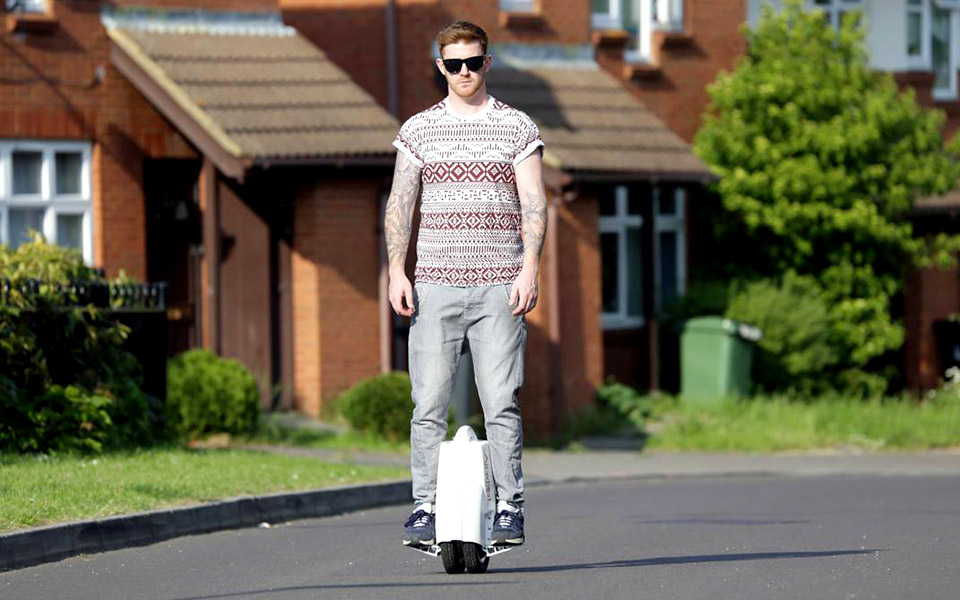
Here comes another awesome way to get around: The self-balancing, lightweight, hands-free transport that is guaranteed to stop people in their tracks when you ride past them on any of the eight models of the Airwheel electric unicycle. Lean forward to go, tilt sideways to turn and bend back to slow down, stop or reverse. These unicycles are so small, you can pick one up with one hand and take it with you to vanquish fears of having your ride stolen by leaving it tethered to a bike rack. Weighing from 9.8 to 13kg, these transporters boast powerful batteries (from 400 to 1,000 watts), so they hold a charge nicely. Pick your terrain: gyroscope stabilizers handle every challenge—which is why Airwheels are becoming the darling of international gadget shows. Cost? Good news: Buy a budget Airboard for £499 or spend up to £1,300 for the sexiest unit of all. You’ve got to see them to believe them, so start shopping.
Substitutes for Running?
Science fiction? A few of these products are within the realm, but substitutes for running? Hardly. That said, we are curious to know your reactions to these products and implore you to answer our question: If money was no object, and you could choose any of these new products to complement your current running and conditioning routine, which would you pick and why?


